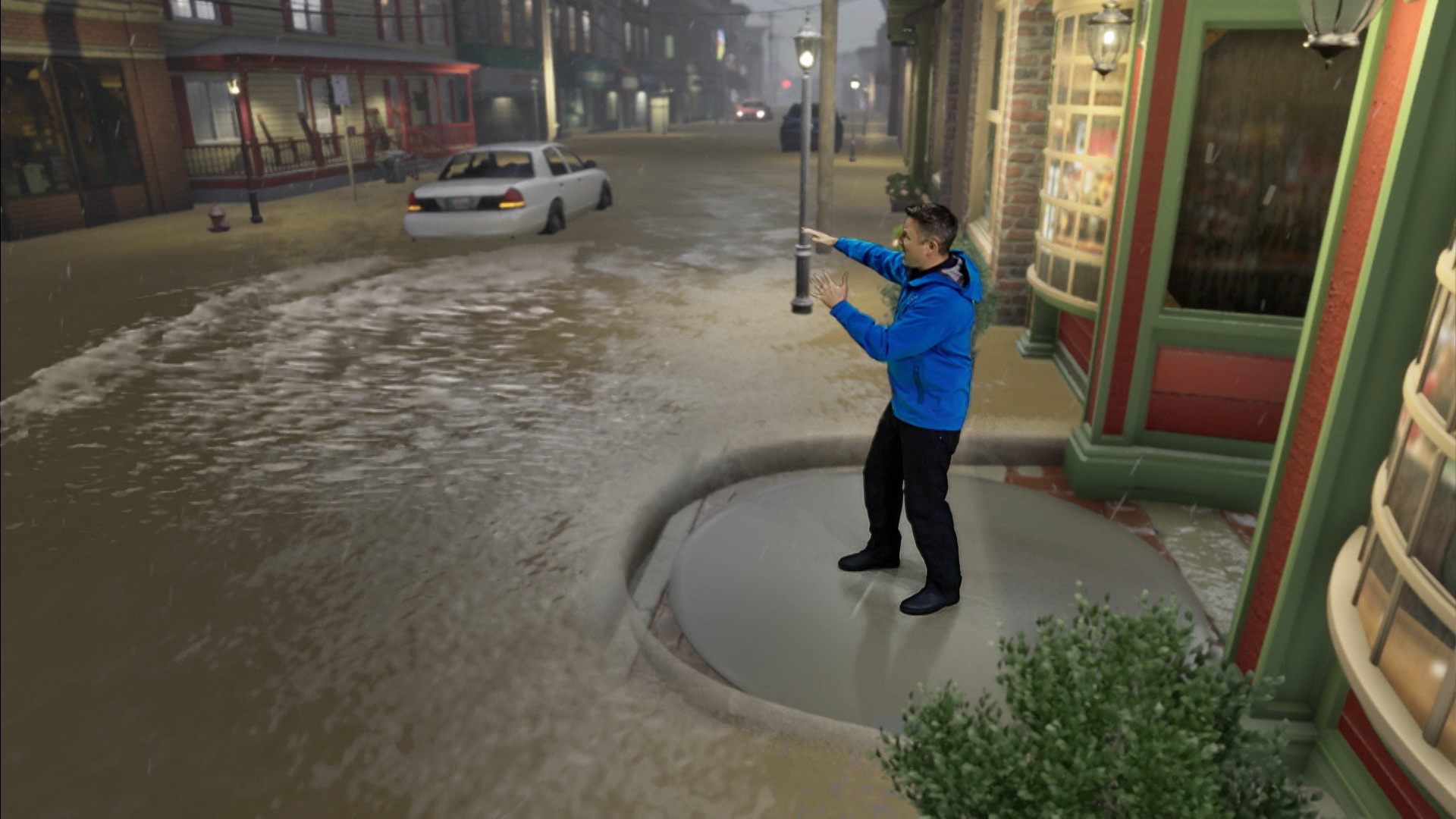The Weather Channel Uses Immersive Mixed Reality to Bring Weather to Life

The very first weather broadcast was back in 1941, when Wooly Lamb, an animated cartoon character, gave the weather report for what would become WNBC. Over the years, the green-screen TV weather reporting we now see every day replaced static maps. In the case of most TV weather broadcasts, not much else has changed: The meteorologist stands in front of a map and explains the forecast. The Weather Channel television network is the exception.
In 2015, The Weather Channel introduced its first immersive mixed reality experience to better explain the anatomy of a hurricane. According to director of weather presentation Mike Chesterfield in a piece about this technology in Fast Company, "That was the first aha moment for all of us. We were able to put [meteorologist] Jim Cantore next to a tornado — and look how much it enhanced the story."
I had a chance to speak with Michael Potts (pictured below), vice president of design for The Weather Channel, about how the broadcaster decided to use these various immersive technologies to enhance its storytelling capabilities. In his role, he is responsible for all the presentation design that viewers see on TV, as well as in other content across all of the broadcaster's distribution channels, including its OTT product, Local Now.
"Presentation in the weather space hasn't changed in decades," Potts says. But, he notes, "We're coming to a crossroads in content consumption and viewer appetite across the media landscape, where the presentation really matters to the viewers."
Of course, no conversation about what The Weather Channel is doing to improve content presentation is complete without first defining the technologies. Potts defines immersive mixed reality (IMR) as simply a "more extended reality."
The use of IMR has allowed The Weather Channel to tell stories in a new way. When Hurricane Florence was coming to North Carolina, for example, meteorologist Dr. Erika Navarro was able to combine the traditional color-coded map with an immersive experience showing what a storm surge truly looks like. That approach helps people better understand the power of weather and how it could impact them, Potts points out. Additionally, it helps tell difficult stories, such as stories about ice storms or wildfires, in a compelling way. "We won our most recent Emmy really employing immersive mixed reality," Potts says.
The ability to tell an immersive, compelling story is what led to the Emmy, but also what captivates viewers. "This technology allows us to show, not say," Potts explains. "It's our way to make it up-front and bold and real. It looks and feels real; viewers can imagine themselves there or see it. It's visceral."
With IMR, Potts and his team are also able to create a new way to tell stories that are still being debated, such as climate change. "You can tell the climate story, you can show bar charts, you can show trends over time, the variations and droughts and deforestation, and all the other things that go into the reasons why these things happen," he says. "But, there's nothing like putting a visual to it and allowing your audience to picture themselves there and feel it. It's a sensory thing, where we're translating the reams of data into a visual storyline that's impactful."
For Potts, IMR allows The Weather Channel to enhance its storytelling capabilities; to present stories in ways that are beyond conventional production avenues, so they hold it to a higher standard. Potts makes sure that when his team uses IMR, it meets the litmus test of, "Should we do the story a different way? Is there another way to produce it?" If they can use more traditional methods — using location shots, for example — then that's what they'll do.
The Weather Channel has made sure to bring all of its staff into the process, helping its talent understand the role they play in delivering a story using IMR. All of the talent goes through "IMR school," a place for them to learn and share best practices. The staff is so excited about using IMR to tell their weather stories that there's currently a waiting list to use the studio. "There's a huge affinity for this kind of content because it really is unlike what anyone else is doing," Potts says.
The talent aren't the only ones getting in on the act. The Weather Channel is also bringing advertisers into the IMR experience. "We're helping to bring messages they care about to life," Potts explains. For example, State Farm partnered with the network to showcase the impact of Hurricane Dorian as it was approaching Florida, showing viewers how to best prepare for the storm through immersive mixed reality technology.
Lastly, The Weather Channel has garnered an overwhelmingly positive response from its audience. "I think they're amazed," Potts says, adding that IMR has led to the highest engagement the broadcaster has ever seen. "They're hungry for it … and I think the reason is, we always put our best effort into it, we want to make it hyper-realistic, and we want it to engage the audience in a way that's personal."
One of the factors his team uses to determine IMR's success is whether the audience is sharing the content. According to Potts, they're doing that a great deal.
In the future, The Weather Channel wants to use immersive mixed reality in its programming on a daily basis. "It's a differentiator for our network. It tells stories in ways that you just can't tell them," Potts explains. "We're concepting the experiences on how we're going to forecast; how we're going to transport people from city to city and explain weather in ways that we've never done to date."
IMR has clearly created engagement with The Weather Channel's talent, advertisers, and audience. As more and more broadcasters look to use IMR in their newscasts, know that Potts and his team will be pushing the envelope, continuing to explore new ways to tell the important stories of how the weather impacts us today and how it will impact us in the future.
Click the social buttons to share this story with your friends and colleagues.
The opinions and points of view expressed in this content are exclusively the views of the author and/or subject(s) and do not necessarily represent the views of MediaVillage.com/MyersBizNet, Inc. management or associated writers.


